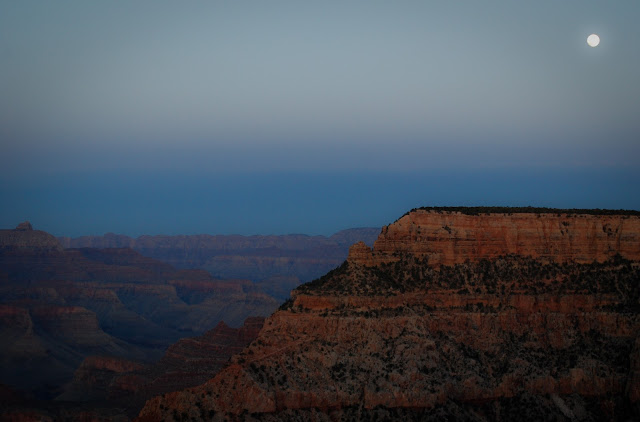“Life is a great adventure—accept it in such a spirit.” – Theodore Roosevelt
A century ago, America was well on her way to irreparably destroying the very earth on which she sat. In a matter of decades, the young nation had carved a triumphant swathe across the virgin continent, leaving a path of death and destruction in its wake. Displacement and mass-extinction—the results of “progress.” Whatever the sins of our past, there is no denying that without this period of wild expansionism—“manifest destiny” we call it, America may never have grown into the great nation she is today.
Early champions of wilderness preservation, such as Teddy Roosevelt, John Muir, and even Gifford Pinchot, saw the grim future we were barreling into, if steps toward conservation weren’t to be taken. These three men each held distinctly different beliefs of what exactly entailed “conservation.” That being said, it is due to their initial efforts and of those who followed in their stead, that our most beautiful and wild of places remain intact—and en-large unadulterated, for the adventure and enjoyment of the generations.
In the American southwest, contrast is king. This is where the Rocky Mountains meet the Sonoran Desert, where the old west comingles with metropolis. Humanity has thrived here, in this, the most unforgiving of environments for millennia, and today millions call sprawling desert oasis’ home. Until the middle part of the 20th century this would have been impossible; utterly unsustainable. Only a hundred years earlier, dusty settlements had clung to life surrounding railroad development and mineral deposits. Water was scarce, and life was unimaginably hard—we call this period: the Wild West.
Pictured Right: With Beaver Creek—and water—nearby, cactus grow on the outskirts of a true desert oasis. Montezuma Castle, AZ.
Today, Phoenix, Arizona is the 5th largest incorporated city in the United States, as well as one of the fastest growing. If not for vast technological improvements in irrigation since the 1940’s, and a series of monumental engineering projects routing massive quantities of water hundreds of miles into the desert, the viability of Phoenix as a metropolitan area wouldn’t have even been feasible. Without water, Phoenix is a desert—in fact, the Sonoran Desert; hot, flat, and dry.
Pictured Left: Montezuma Castle; home to the Sinagua Indians and their predecessors for the better part of a millennium. The cliff-side dwelling pictured is just the remaining tower of what was once a vast, settlement complex.
Travelling further northward, at around 6000 feet in elevation, the terrain undergoes a startling transformation; bringing to mind visions of Wile E. Coyote and Roadrunner. The bare, rolling hills and charred brush of the high desert suddenly give way to vast, low-lying forests. Jagged massifs of red rock rise high in the distance, stark in contrast against the deep blue of the Arizona sky.
The village of Oak Creek, Arizona rests in the shadow of a vast Hilton resort complex, offering the standard 4 or 5 star experience; complete with 18 holes. Yet, Oak Creek is just an appetizer to Sedona. On the valley floor, surrounded by ancient and stunning formations of red rock, Sedona is a true southwestern paradise. The pueblo architecture of the town itself manages to inconspicuously blend with the surrounding landscape, and in places, nearly adds to the natural beauty. There certainly is money here. Gently rising from the peaceful waters of Oak Creek, the town offers a variety of shopping, dining and lodging fit for any budget.
Outside of Sedona, adventure beckons—presenting ample terrain fit for even the most accomplished climber, hiker or mountain-bike enthusiast in every direction. Following the creek north and out of town, you enter the impressive Oak Creek Canyon, where deciduous forests of oak and cottonwood reign supreme. A number of must-see viewpoints and beautiful swimming holes dot this roadway into the mountains. Wait, mountains? In Arizona?
Pictured Right: Evidenced by the design of this structure, half traditional pueblo and half log cabin, the mountains meet the desert here in northern Arizona. -Grand Canyon, AZ.
Aside from the obvious wine-and-dine scene presented by any college town worth its weight in paper, Flagstaff is also the gateway to the San Francisco Peaks, the Arizona Ski Bowl, and happens to be the nearest major city to the Grand Canyon. As is such, the town has become a Mecca of sorts for outdoor enthusiasts from throughout the southwest, and beyond.
Forever pushing northward and now into Arizona’s largest mountains, we approach the 12,637 ft. Humphreys Peak. Called Aaloosaktukwi by the native Hopi tribe, the peak isn’t too impressive, rising only 4000 feet or so above the surrounding plain. However this subtly reminds us that we’re moving along a paved roadway over 8000 feet above sea level—in April no less; a daunting to impossible task in mountains further north. Nestled beneath Humphreys, lies the Arizona Ski Bowl—offering decent, and at times world-class skiing within 150 miles of the Sonoran Desert and the Phoenix metro-area. From the ski-area, it’s less than an hour’s travel—a figurative hop, skip and a jump—to one of the world’s greatest natural wonders; The Grand Canyon.
Pictured Above: At 277 miles long, a mile deep, and as much as eighteen miles across, Arizona’s Grand Canyon is a spectacle the likes of which cannot be found anywhere else on the planet. Two round-trip tickets to Phoenix during spring break—about 700 dollars. Moonrise over the southern rim of the Grand Canyon—Priceless.
Arizona’s crown-jewel, and one of Earth’s “seven natural wonders,” the Grand Canyon is a true sight to behold. Created through geologic processes over the course of the last two billion years—half the lifespan of the planet itself—the gorge, and the present-day national park that now encompasses it, play host to an average of 4.4 million annual visitors. The view from the rim is truly awe-inspiring; humbling, demonstrating how small that we as individuals really are. Two billion years; what is the average American lifespan of 78 years in comparison? Pleasantly miniscule.







No comments:
Post a Comment